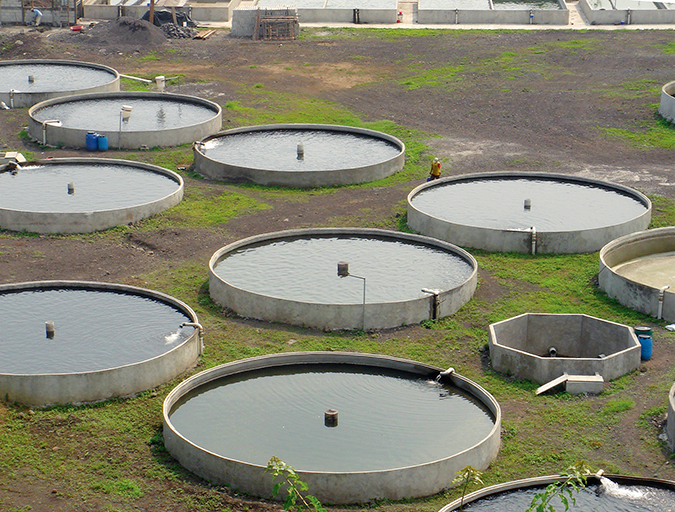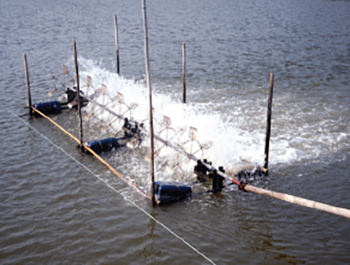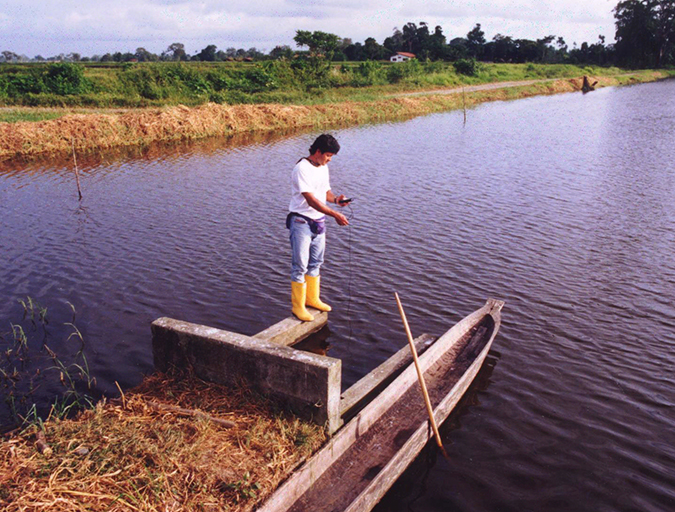Common measurement a misunderstood water quality variable

Aside from temperature and dissolved oxygen, pH is likely the most commonly measured water quality variable in aquaculture. But it is probably the most misunderstood water quality variable in aquaculture. One of the most disconcerting aspects of pH in aquaculture systems is its propensity to change rapidly. Thus, I would like to convince you that this is a natural phenomenon and often of little consequence.
What is pH?
I would feel remiss not to define pH despite it divulging into basic chemistry. The pH was adopted many years ago so that chemists would not have to express the hydrogen ion conductivity in a solution as a small molar number, e.g., 0.00000001 M hydrogen ion concentration. The pH is defined as the negative, base 10 logarithm of the hydrogen ion concentration. That is:
pH = -log[H+].
Thus, a hydrogen ion concentration of 0.00000001 mole/L (10-8 M) becomes pH 8:
pH = -log(10-8 M) = -log (-8) = 8.
Pure water has a hydrogen ion concentration of 10-7 mole/L (pH 7). The product of hydrogen ion and hydroxyl (OH–) ion concentration in pure water must equal 10-14 at 20 degrees-C. This is a basic characteristic of water. Thus, pH ranges roughly from 1 to 14, and pH 7 – where hydrogen ion and hydroxyl ion concentration are equal – is the neutral point (neither acidic or alkaline). The farther below pH 7, the more acidic, while the farther above pH 7, the more basic (or alkaline) the water will be.
Relevance and behavior in aquaculture systems
Aquaculture species will usually die quickly if the pH is less than 4 or greater than 11 (Table 1). Most species can tolerate a pH between 6 and 9 fairly well, but they are usually stressed by pH outside this range resulting in less growth and greater susceptibility to disease. The optimum pH for most species is between 7 and 8.5. However, brief excursions outside the optimum range likely are insignificant.
| pH | Effect |
|---|---|
| 4 | Acid death point |
| 4-5 | No reproduction |
| 5-6 | Slow growth |
| 6-9 | Best growth |
| 9-11 | Slow growth |
| 11 | Alkaline death point |
The ambient pH of water that does not have a high abundance of biological activity (high rates of respiration or photosynthesis) is determined by its chemical composition. Some common examples of ambient pH are provided in Table 2 below.
| Type of water | pH range |
|---|---|
| Water exposed to highly acid-sulfate soils | 2 to 5 |
| Water from jungle areas that contain a high concentration of organic acids | 4 to 6 |
| Water in humid areas with highly leached soils | 5.5 to 7 |
| Water in humid areas with limestone | 7 to 8 |
| Water in arid regions | 8 to 9.5 |
| Seawater | 7.9 to 8.2 |
As a general rule, the ambient pH tends to increase from around 5 in water with no alkalinity to 8 or above at alkalinity of 100 mg/L or greater.
Acidic waters are typical limed in aquaculture, and the ambient pH after liming usually is 7 to 8. However, the pH fluctuates in aquaculture ponds, often rising from 6 to 7 in the early morning to 9 to 10 in the afternoon in ponds with low alkalinity (0-40 mg/L), and from 7 to 8 in the morning to 8 to 9.5 in the afternoon in ponds that have naturally higher alkalinity or have been limed. This phenomenon is illustrated in Fig. 1 with pH data from two ponds of different alkalinity.

Carbon dioxide exists in water up to pH 8.3. Aquaculture ponds have a high abundance of phytoplankton and other microorganisms because of additions of nutrients in fertilizers and feeds. Thus, there is a lot of respiration at all times, and a high rate of photosynthesis during the daylight hours. The carbon dioxide concentration is greatest in the early morning, but during the day the phytoplankton remove carbon dioxide (an acidic substance), and the pH rises.
When all of the carbon dioxide has been removed, the pH will be 8.3. Photosynthesis continues, because most phytoplankton can use bicarbonate as a carbon source in photosynthesis. However, when carbon dioxide is derived from bicarbonate, carbonate is released into the water. It hydrolyzes and results in the release of hydroxyl ions that cause pH to rise further.
Alkalinity tends to buffer water against pH change and calcium in the water precipitates carbonate as calcium carbonate. Thus, the pH rise in water is lessened by the presence of a moderate to high alkalinity concentration and plenty of calcium. However, low alkalinity and low calcium concentration and higher alkalinity waters with low calcium concentration may reach pH of 10 or above in the afternoon because of photosynthesis.

At night, photosynthesis stops, and carbon dioxide accumulates in the water causing basically the reverse of the reactions that occurred during the day. The pH declines to about the same morning value of the previous day.
Managing daily fluctuations
There is little that can be done to avoid the daily fluctuation in pH. The difference between minimum and maximum daily pH values, however, can be minimized by using fertilization and feeding rates that do not result in excessive phytoplankton, liming low alkalinity ponds, and applying a soluble calcium source such as gypsum (calcium sulfate) to ponds with moderate to high alkalinity but low calcium concentration. As a general rule, calcium concentration expressed as milligrams per liter of calcium carbonate (calcium concentration X 2.5) should be approximately equal or greater than the total alkalinity.
The wide fluctuation in pH that occurs daily in ponds even with moderate to high concentrations of alkalinity and calcium seem to be very disturbing to many aquaculturists. In fact, shrimp farmers may add liming materials to ponds in an effort to stabilize pH around 8. This is a futile effort; ponds filled with seawater or brackishwater often are near saturation with calcium carbonate, and liming materials do not dissolve. The normal daily fluctuation in a pond within the optimal range of alkalinity and calcium concentration will not harm fish, shrimp, or other aquatic organisms.
My advice is as follows: if you measure the pH in a pond and find it between 8.5 and 9.5 in the afternoon, do not worry, in a few hours, the pH will be lower and the culture species will not know the difference.

Ponds with low alkalinity water – below 40 mg/L in freshwater, 65-75 mg/L in brackishwater, and 90-100 mg/L in seawater – agricultural limestone or lime should be applied. Sodium bicarbonate can be used where it is necessary to quickly increase alkalinity.
Author
-

Claude E. Boyd, Ph.D.
School of Fisheries, Aquaculture and Aquatic Sciences
Auburn University
Auburn, AL 36830 USA
Tagged With
Related Posts

Responsibility
Calcium and magnesium use in aquaculture
Aquatic plants and animals get the essential nutrients calcium and magnesium from water and food. Calcium concentrations impact the hydration and development of eggs in a hatchery, where calcium carbonate precipitation can be troublesome.

Responsibility
Efficiency of mechanical aeration
Although relatively expensive, mechanical aeration increases production. Asian-style paddlewheel aerators are widely used but are inefficient. Testing has led to more efficient designs that are now widely used in U.S. catfish and shrimp ponds.

Responsibility
The importance of water analysis in aquaculture
Proper monitoring of water quality in aquaculture production systems is critical to enable appropriate and timely management decisions. It requires reliable equipment, trained technicians that follow instructions and apply quality control measures, proper reagents and calibrated equipment, and appropriately collected water samples that are promptly analyzed.

Innovation & Investment
After half a century, Auburn’s Claude Boyd to ‘retire’
Friends, colleagues and former students of longtime Auburn University Professor Claude E. Boyd, Ph.D., don’t expect the Mississippi native to slow down, despite the quiet announcement of his retirement earlier this month. The 50-year veteran researcher’s career has been truly extraordinary.

